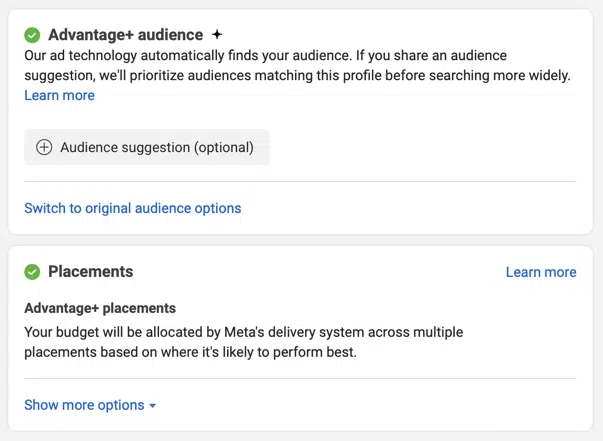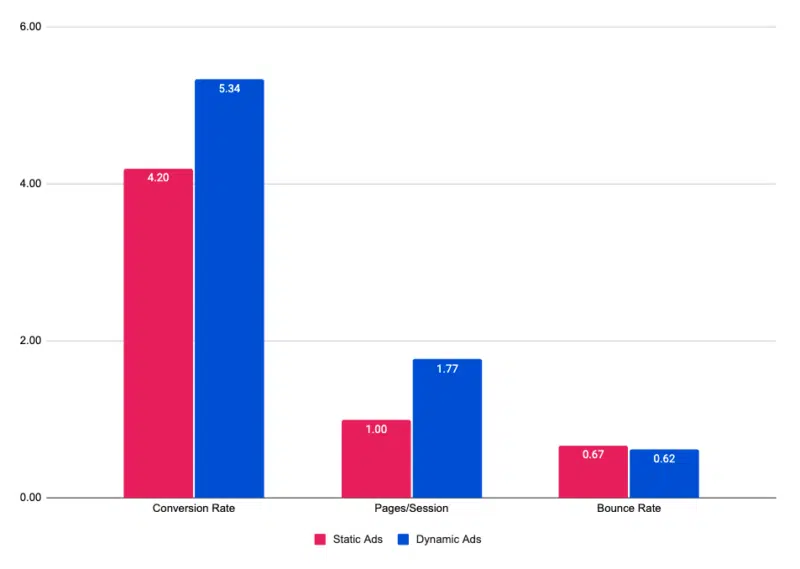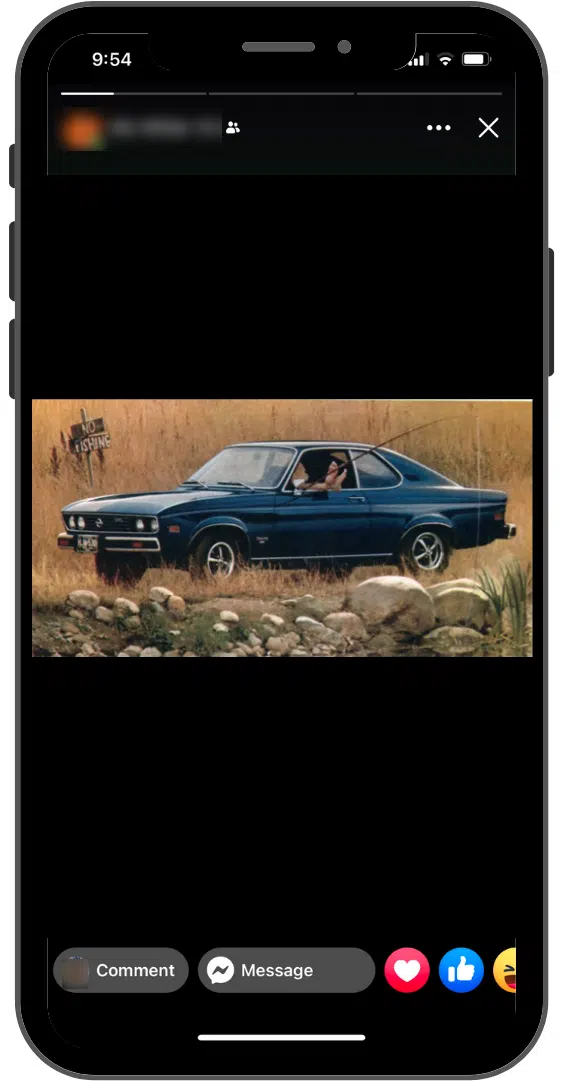4 reasons you should try Facebook Dynamic Ads
Facebook's AI-powered Dynamic Ads are a smart, cost-effective option to increase user engagement and ad performance. Here's why.
Are you looking to engage your audience with a personalized experience throughout their meandering journey – from awareness to conversion and Organic Search through Paid Social?
Then Facebook Dynamic Ads could be your marketing funnel’s secret weapon.
Regardless of whether you’re B2C or B2B, Facebook’s Dynamic Ads are a smart, cost-effective way to expand your reach.
Here are four reasons why you should consider trying Facebook Dynamic Ads.
1. AI does the hard work
AI may be the big buzzword these days, but seasoned marketers know that paid advertising platforms like Meta have been using AI algorithms for all sorts of things, including Facebook’s Dynamic Ads.
Originally released in 2015, Facebook’s Dynamic Ads were touted as a format to help advertisers “capture the intent signals that customers show on websites and apps to ensure the right products are connected to the right people.”
Put simply, Meta uses AI to analyze user behavior and show users applicable content.


Where Dynamic Ads shine is the AI’s ability to decipher user behavior and preferences with precision.
Dynamic Ads tap into Meta’s treasure trove of user data, allowing the ads to adapt seamlessly to each user and their unique surroundings.
Unlike traditional ad campaigns that require painstaking A/B testing, Dynamic Ads ads eliminate the need for lengthy guesswork. AI does the heavy lifting by continuously analyzing user engagement data and fine-tuning the ad content in real time.
No more creating separate tests. No more manual adjustments. It’s all taken care of behind the scenes.
2. Efficiency
Personalization and performance are intertwined – personalized ads can increase user engagement and significantly enhance ad performance.
So if you aren’t leveraging Dynamic Ads in your Facebook strategy, you’re missing out on that increased user engagement, ad performance and an overall cost-saving tool.
Finding the winning combination in traditional ad campaigns often requires hefty budgets for A/B testing and manual adjustments after lengthy learning periods.
Dynamic Ads, however, continuously optimize ad content based on user behavior, eliminating the need for costly trial and error. This translates into better engagement, higher conversion rate, and reduced cost per lead, making every advertising dollar work more efficiently.

3. Low maintenance
In the beginning, crafting Dynamic Ads can be more time-consuming.
You’re selecting individual pieces for the groundwork for your personalized ad journeys. And these pieces all need to play nicely together because they’ll be tossed into a blender and presented in all manner of combinations.
However, the beauty of the approach lies in what follows: once the setup is in place, you get to sit back and watch Facebook take the reins.
Instead of constantly fiddling with ad parameters (which Facebook discourages you from doing anyway), you can entrust the heavy lifting to Meta’s algorithms. Meta uses user behavior, engagement data, and countless other factors to automatically fine-tune your campaigns.
This means your ads become more effective over time without you needing to lift a finger (and to really extend their expiration date without increasing their frequency, use videos!).
In essence, Dynamic Ads allow you to manage your time better, by being high-maintenance upfront with minimal ongoing effort.
It’s the best of both worlds – a personalized, powerful ad experience for users without constant tinkering for marketers.
4. Assets are everything
If a picture is worth 1,000 words, then an ad asset is easily worth $1,000.
Dynamic ads rely so heavily on visual appeal to capture your audience’s attention, that failing to have high-quality creative that resonates with users can make or break your campaign performance.
To ensure your assets have the best shot at performing well, consider three things:
No maximum resolution
Facebook recommends a resolution of at least 1080×1080 pixels.
However, Facebook also notes that there is no maximum resolution.
That means go as high as you can.
Aspect ratios are key
While you can get away with using single images in various sizes for some campaigns, there are many instances where having the correct image ratios is absolutely key to performance.
Your ad could look downright out of place:

To ensure maximum coverage across these platforms and the best bang for your buck, you need the trifecta: assets in the right ratios for stories, feed and Instagram Reels.
Different mediums demand different assets
“Great message, wrong medium,” is a tale as old as time.
If your asset doesn’t take into account the difference between Instagram and Facebook, your campaign will not be as effective as it could be.
Take Instagram Reels, for example. The vertical format demands a way to showcase your product or service in a way that feels native to the platform.
Here’s an Instagram Reel ad that used live-action, high-quality video:

Feed images, on the other hand, need to pop out amidst a sea of content.
The same advertiser also opted to use a colorful graphic, to help it stand out from the photos users share on Facebook:

Personalization and performance are inextricably linked
If you’re looking to increase your Facebook reach you should consider testing Dynamic Ads. You can leverage user data to produce personalized ads that perform – without huge investments of time or money.
Contributing authors are invited to create content for Search Engine Land and are chosen for their expertise and contribution to the search community. Our contributors work under the oversight of the editorial staff and contributions are checked for quality and relevance to our readers. The opinions they express are their own.
Related stories
New on Search Engine Land